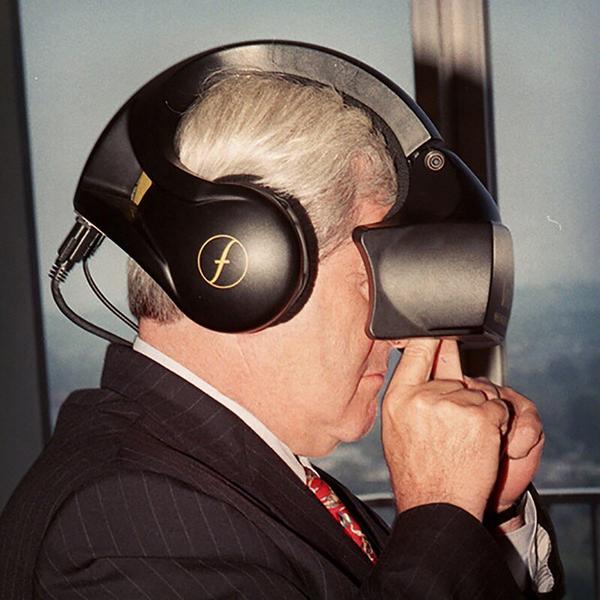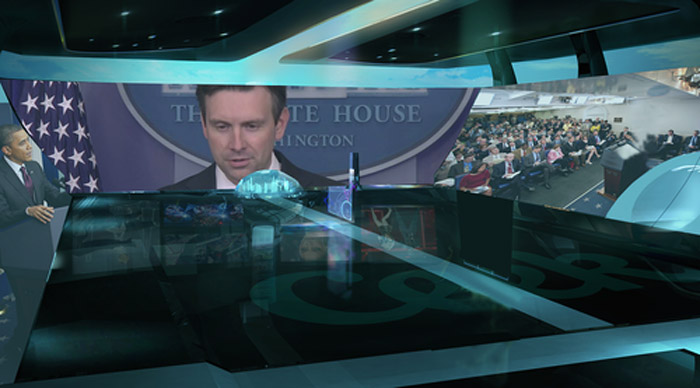Virtual reality is on the precipice of transforming our world in many ways. From the way we entertain ourselves, to the way we interact with one another, to the way we work – there are few facets of our lives that virtual reality won’t touch in the upcoming years. With Oculus, HTC and Sony all planning to release consumer grade virtual reality headsets on the market in the next eight months and sales expected to climb into the millions, virtual reality very well may be the year’s defining technology – and in many more ways than just gaming. Outside of the virtual reality bubble, there is another event in 2016 that also will shape the world we live in: The US Presidential Election.
Read More: Barack Obama makes an appearance in VR
In the previous Presidential election cycle, big data analytics played a major role in how the candidates shaped their campaigns. Wired magazine went as far as dubbing it the “nerdiest election ever,” and Obama’s campaign manager Jim Messina credits their data analytics strategies as one of the biggest advantages their camp had over Mitt Romney’s. This year’s election figures to be even more heavily reliant on data analytics than ever before. Using a combination of social and big data, this year’s candidates will be figuring out how best to spend their massive campaign coffers (the 2012 election saw $7 billion spent by candidates and interested parties). But with everyone already relying on metrics from regular online data, where will this year’s candidates find that new edge over the competition? The answer may very well lie in virtual reality. How? Read on.
Virtual reality brings with it a whole new slew of potential metrics for campaign managers to analyze. Things like gaze and eye tracking within a virtual reality headset open new doors for precision with metric targeting. For example, a campaign manager would be able to tell where within the experience the test group were focused allowing them to discern which aspects of the messaging were hitting home and which ones were causing people to drop off. But this is just the start of the potential data that could be collected to help influence the upcoming election.

One of the companies looking to make a virtual reality splash in the upcoming election cycle is the Media Ventures Group – an online content provider with a number of different channels focusing on industries ranging from Entertainment to Politics. Last week the group announced Kosher.tv an advanced analytics platform for virtual reality. The setup uses a combination of eye tracking, biometric data, and EEG sensors within a virtual reality headset to track the participants as they watch a piece of content – with the idea being to see if they thought the content was “kosher.” Speaking with Kosher’s project lead, Gunnar Larson, we learned that “Kosher is consulting with political campaigns,” to score their content before it reaches a broader audience. Using analytics and biometric feedback in an immersive environment, Media Ventures is able to help direct the message to best fit and resonate with the intended audience.
But that is just part of the group’s plans for virtual reality during the Presidential election. Election.tv is another Media Ventures property which has been focused on curating and providing election content (debates, speeches, townhalls, etc.) since 2006. Currently the site has reverted to a splash page as the team prepares to bring it into the next generation with plans to stream all of the debates live in VR on the site. They also intend to integrate Kosher into the platform, albeit without the eye tracking and biometric data for home users. Larson says the rollout for both platforms, Election.tv and Kosher’s virtual reality analytics, will be “significant” and that we should begin seeing some of the content “later this summer.”
Advanced data collection through virtual reality could open big doors for campaigns in 2016, with the new data providing valuable insights into the constituency, but it may be only the start of virtual reality’s impact on the upcoming election, for better or worse.

In 2008 and 2012, President Obama used in game advertisements to help drum up support for his campaign running billboards in games like Need For Speed and Madden 13. With ad platforms like MediaSpike preparing to launch for virtual reality, we could easily see this kind of placement in VR as well.
But ads aren’t the only way that politics have recently found it’s way into the virtual world. In 2014, the National Republican Senatorial Committee released Mission Majority a game created with the intention of influencing those playing to “dodge everything the Democrats throw at them.” In Mission Majority you play as Giopi the elephant on his quest to help gather more volunteers for the Republican campaign. Along the way ‘evil’ representations of democratic senator Harry Reid and President Obama attempt to thwart Giopi’s efforts as you literally crush taxes and dodge Mudslingers. The game even had micropayments that allowed you to donate to the campaign. Blatant propaganda games like this potentially give one reason for concern, especially if they are paired with virtual reality.
Chris Milk, founder of VRSE and one of the current pioneers in the virtual reality content creation field, recently gave a fascinating TED talk where he called virtual reality the “ultimate empathy machine.” The reason for this is that virtual reality has the ability to induce a feeling of “Presence,” that sense that you are actually experiencing the scene you are in. When this happens, it fundamentally changes one’s emotional response to the content – something that could potentially be used by politicians to their advantage (not that we are advocating for such practices). We already see campaign ads which have the intention of being emotionally manipulative, imagine how much worse they could get with the power of virtual reality. On the flip side of the coin, however, that same ‘manipulative’ practice could be used to not only emotionally charge, but also educate the constituency about important issues, like the environment.
One of the people looking to use virtual reality for these purposes this election is Mary Spio, founder and CEO of Next Galaxy – a virtual reality content and social platform. Spio recently posted about a new politically focused project dubbed POTUS VR. According to the project’s proposal, POTUS VR “is a virtual reality app that involves experiential learning, fosters civic participation and increases voter turnout.” Through the experience Spio hopes to educate younger voters on things like major issues and the political process. According to Spio, POTUS VR already has a strong team behind it and have acquired the URL Potus.org which will serve as the project’s hub.

Efforts like these are likely only the beginning of the impact that virtual reality will have on this upcoming election. It will be interesting to see, however, how the general population responds to the medium being used for these purposes.
As Uncle Ben told Peter Parker, “with great power comes great responsibility.” It will be up to election regulators and the general public to help curtail any efforts to use it in ways that could be damagingly manipulative. This technology will help the politicians in the race to focus their efforts and messages to be more in line with their constituency, for better or worse. Ultimately it may be our responsibility as the voting public to decide if these efforts are leading us towards a brave new world or towards a Brave New World.
Either way, it looks like virtual reality and big data will play a role in the 2016 Presidential election cycle.
UPDATE: Looks like Bernie Sanders is already getting on the 360-degree video train.






























